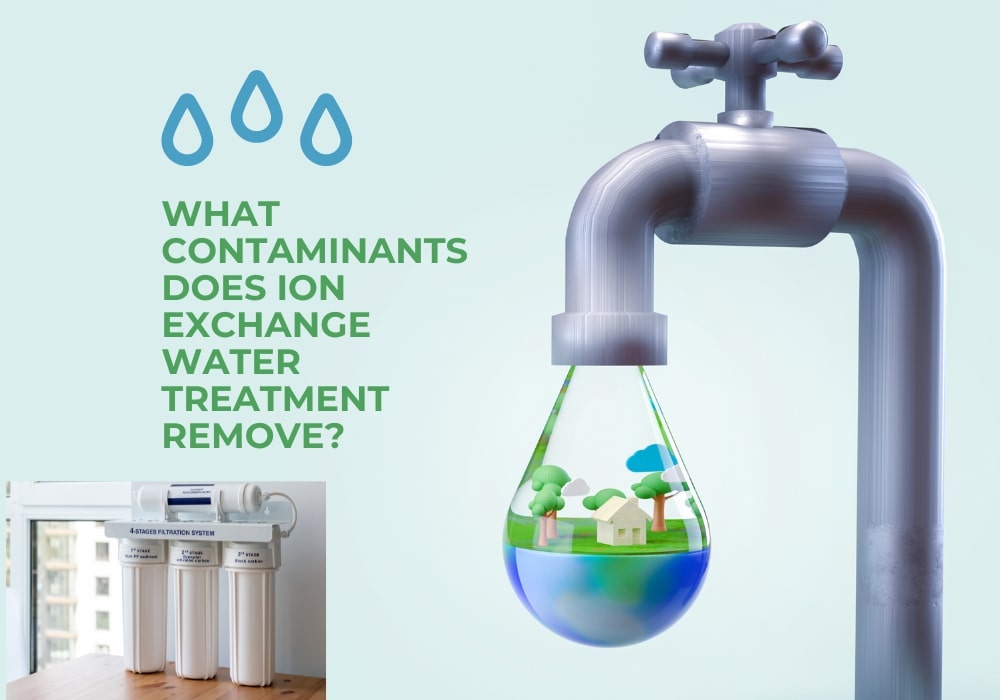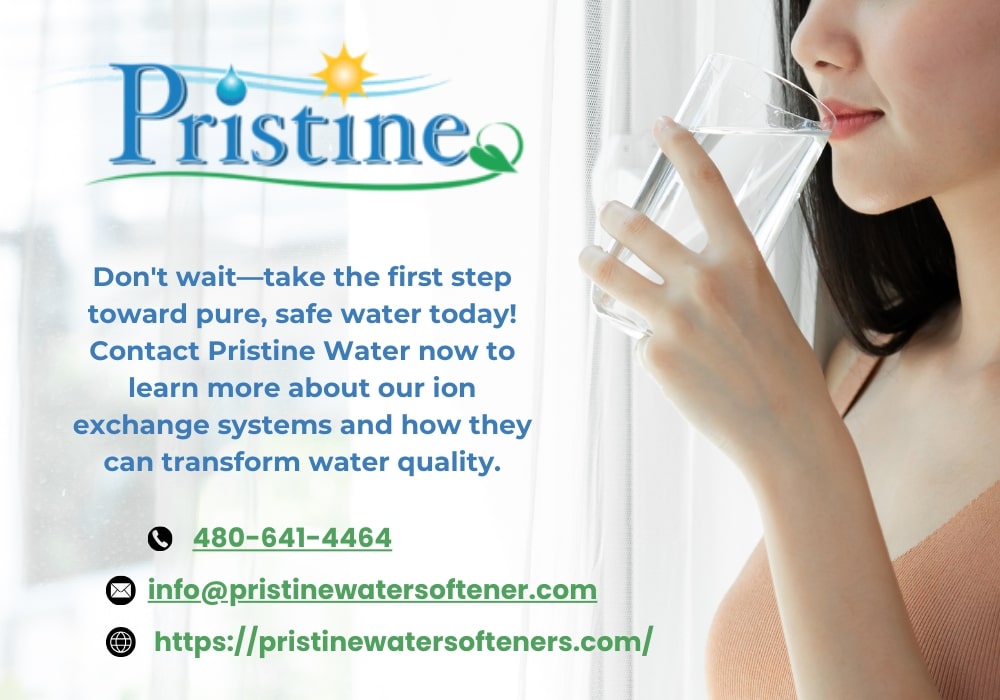Imagine turning on your faucet and instantly knowing that the water flowing out is clean and free of harmful contaminants. Whether you’re washing dishes, showering, or simply pouring yourself a glass of water, you want the peace of mind that what you’re using is safe and pure. This is where ion exchange water treatment comes into play. It’s a powerful method that has revolutionized how we purify water, making it cleaner and safer for various uses, from residential drinking water to complex industrial applications.
But how does this technology work? What makes it so effective at removing unwanted impurities? And most importantly, is it the right solution for your water needs? This blog post will dive deep into ion exchange water treatment systems. By the end, you’ll have a solid understanding of how these systems operate, their benefits, and why they might be the perfect choice for ensuring your water is as pure as it can be.
What Is Ion Exchange Water Treatment?
Let’s break down what ion exchange water treatment means to kick things off. At its core, ion exchange is a process that removes undesirable ion-charged particles from the water and replaces them with more desirable ones. This might sound technical, but it’s a straightforward concept once you get the hang of it.
Think of it like swapping old batteries in your remote control for new ones. The old batteries are still batteries, but they’re not doing their job anymore. It would help to have fresh, new batteries to make everything work properly again. In the same way, ion exchange swaps out ions in your water that you don’t want—like calcium and magnesium, which cause water hardness—with ions that won’t cause problems, like sodium or hydrogen.
How Does Ion Exchange Water Treatment Work?
Now that you know what ion exchange is, let’s discuss how it works. The process is built around a resin, the star player in any ion exchange water treatment system. This resin comprises tiny, porous beads loaded with positive (cation) or negative (anion) ions.
When water passes through the resin, the unwanted ions are attracted to and held by the resin. At the same time, the resin releases its ions into the water in a one-for-one exchange. The result? Conversely, the water is free of the contaminants you want to get rid of.
Here’s a simple analogy: Imagine your water is like a crowded bus full of passengers you don’t want—calcium ions. As the bus (your water) moves through the station (the resin), these unwanted passengers get off the bus, and new, more desirable passengers—like sodium ions—get on. When the bus reaches its destination (your faucet), it’s full of the right kind of passengers, and the undesirable ones are left behind.
Types of Ion Exchange Water Treatment Systems
One of the great things about ion exchange water treatment systems is that they can be tailored to suit different needs. There are several types of systems available, each designed to target specific contaminants:
- Cation Exchange Systems: These systems are the go-to solution for water softening. They replace hard water minerals like calcium and magnesium with sodium or potassium ions. This process prevents scale buildup in pipes and appliances, saving you much money on repairs and replacements.
- Anion Exchange Systems: If you’re dealing with water with high levels of contaminants like nitrates, sulfates, or chlorides, anion exchange systems are what you need. These systems swap out the negatively charged ions in your water for less harmful ones, improving water quality significantly.
- Mixed-Bed Ion Exchange Systems: When you need the highest purity level, consider laboratory or ultra-pure water for industrial processes. Mixed-bed systems are the answer. These systems contain cation and anion resins in a single unit, providing a more comprehensive treatment that tackles a broader range of contaminants.
Benefits Of Using Ion Exchange Water Treatment Systems
So why should you consider an ion exchange water treatment system over other water purification methods? There are several compelling reasons:
- Effective Removal of Contaminants: Ion exchange systems are highly efficient at removing many impurities from water, including those that cause hardness and harmful substances like lead and mercury.
- Cost-Effectiveness: While the upfront cost of an ion exchange system might be higher than some other options, the long-term savings can be significant. These systems require relatively little maintenance and long lifespans, making them cost-effective.
- Environmental Friendliness: Ion exchange systems produce less waste than water treatment methods. Plus, the resins used in these systems can often be regenerated and reused, reducing the environmental impact.
Common Applications Of Ion Exchange Water Treatment
Ion exchange water treatment systems aren’t just for extensive industrial facilities—they’re also instrumental in residential settings and other applications:
- Residential Water Softening: Hard water is a common issue in many households. It can cause everything from limescale buildup in your pipes to dry skin and hair. Installing a cation exchange system can soften your water, making it gentler on your home and your body.
- Industrial Water Purification: Many industries, including pharmaceuticals, electronics, and power generation, require ultra-pure water to ensure the quality and safety of their products. Ion exchange systems are often used in these settings to remove even the tiniest traces of impurities.
- Wastewater Treatment: Treating wastewater before it’s discharged into the environment is crucial for protecting ecosystems. Ion exchange can remove toxic metals and other harmful substances from sewage, ensuring it’s safe for release.
Choosing The Right Ion Exchange Water Treatment System
With so many ion exchange water treatment systems available, how do you choose the right one for your needs? It comes down to a few key factors:
- Water Quality: Start by testing your water to determine what contaminants are present and in what concentrations. This will help you choose a system designed to target the specific impurities in your water.
- Usage: Consider how much water you need to treat and how frequently. For example, a household system will have different requirements than an industrial facility system.
- Budget: While ion exchange systems are cost-effective in the long run, they require an initial investment. Ensure you choose a system that fits your budget while meeting your needs.
Comparing ion exchange water treatment systems with methods like reverse osmosis or distillation can also help you make an informed decision. Each method has its strengths and weaknesses, so weighing your options carefully is important.
Installation And Maintenance Of Ion Exchange Water Treatment Systems
Once you’ve chosen the right ion exchange water treatment system, proper installation ensures it works as effectively as possible. It’s usually best to have a professional handle the installation to ensure everything is set up correctly.
Maintenance is also crucial. Regularly checking and regenerating the resin will keep your system running smoothly. Depending on the quality of your water and how much you use the system, the resin may need to be replaced periodically. Keeping up with maintenance ensures your water stays clean and extends your system’s life.
Challenges And Limitations Of Ion Exchange Water Treatment
Like any water treatment method, ion exchange water treatment systems have challenges. One of the most common issues is resin fouling, which clogs the resin with organic matter or other contaminants. This can reduce the system’s efficiency and may require more frequent maintenance or resin replacement.
Another limitation is that ion exchange systems aren’t effective at removing all contaminants. For example, they don’t eliminate bacteria or viruses, so you’ll need additional treatment methods if your water is contaminated.
The Future Of Ion Exchange Water Treatment Technology
As technology advances, so does the potential of ion exchange water treatment systems. Researchers are constantly exploring new ways to improve their efficiency and sustainability. For example, new resins are being developed to target a broader range of contaminants or regenerate more efficiently.
In addition, there’s a growing focus on making these systems more environmentally friendly. This includes finding ways to reduce the amount of waste they produce and exploring options for recycling or reusing the resin. As concerns about water scarcity and pollution continue to rise, ion exchange technology will likely play an increasingly important role in ensuring access to clean water.
In a world where clean water is becoming increasingly precious, ion exchange water treatment systems offer a reliable and effective solution. Whether you’re dealing with hard water in your home or need ultra-pure water for industrial processes, these systems can provide the clean, safe water you need.
Understanding how these systems work and choosing the right one for your needs can ensure a reliable, clean water supply for years. As technology continues to evolve, the future of ion exchange water treatment looks bright, with innovations that promise even greater efficiency and sustainability.
FAQs About Ion Exchange Water Treatment Systems
1. What Is The Lifespan Of An Ion Exchange System?
The lifespan of an ion exchange water treatment system depends on factors like water quality, usage, and maintenance. Typically, resins last 5 to 10 years, but regular regeneration can extend their life.
2. How Often Should The Resins Be Replaced?
Resin replacement frequency varies based on water quality and system usage. On average, resins should be replaced every 5 to 7 years to maintain optimal performance.
3. Can Ion Exchange Remove All Contaminants?
While effective at removing many contaminants, ion exchange water treatment systems may not eliminate bacteria, viruses, or certain organic compounds. Additional treatment methods may be needed.
4. What Are The Environmental Impacts Of Ion Exchange Systems?
Ion exchange water treatment systems are generally environmentally friendly, producing minimal waste. However, proper disposal of spent resin and regenerants is essential to prevent environmental harm.
Is Ion Exchange Safe For Drinking Water?
Yes, ion exchange water treatment systems are safe for drinking water. They effectively remove harmful ions like lead and mercury, providing clean and safe water for consumption.
Ensure Pure Water With Pristine Water Softeners’ Advanced Ion Exchange Systems
Ready to experience the benefits of clean, contaminant-free water in your home or business? At Pristine Water Softeners, we specialize in cutting-edge ion exchange water treatment systems designed to provide you with the highest quality water possible. We have the perfect solution if you’re looking to soften hard water, remove harmful impurities, or ensure ultra-pure water for industrial applications.
Don’t wait—take the first step toward pure, safe water today! Contact Pristine Water Softeners now to learn more about our ion exchange systems and how they can transform water quality.



